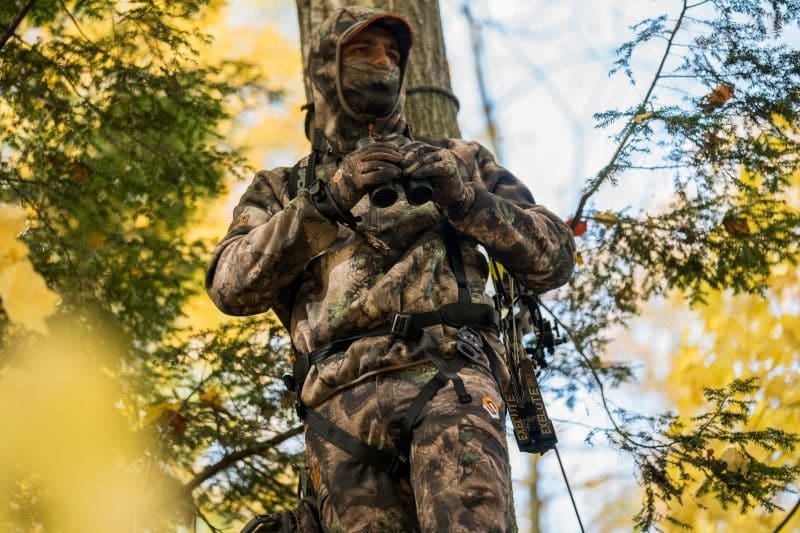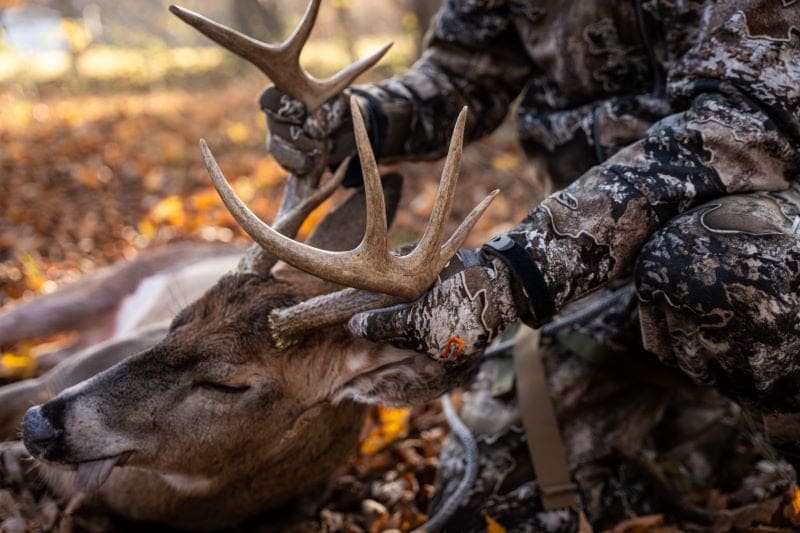“They didn’t get that big by being stupid.” This common phrase echoes through the hunting community, often uttered after a mature buck outsmarts a hunter in the ultimate chess match of man versus deer. Seasoned bucks are some of the most elusive creatures in the wild, armed with years of experience dodging predators, including hunters. Their sharp senses, heightened instincts, and remarkable ability to detect danger make them tough opponents. Outsmarting these seasoned deer requires a strategic approach, unwavering patience, and a deep understanding of their behavior. Yet, even the most prepared hunters can be outmaneuvered by these clever animals. The challenge of this cat-and-mouse game leaves many asking the same question: How can I outsmart mature bucks?

Understand Their Behavior
Mature bucks don’t act like younger deer, meaning you cannot compare other buck sign, patterns, and behavior with that of the bigger mature bucks. Their patterns are more erratic, and they often prioritize safety over convenience. Understanding their habits and how they change throughout the year is essential. One of the most significant differences is that a mature buck’s core area is where he feels most secure. This is typically dense cover such as thickets, swampy areas, or steep terrain. You may not encounter the more mature bucks unless you take the challenge and go to these hard-to-hunt areas or when the rut is in full swing, and they widen their home range. To better understand where the big bucks are staying, study maps and use scouting tools like trail cameras to locate bedding areas and travel corridors.
Scout Like a Pro
After you have studied maps and used GPS hunting apps such as OnX Maps, HuntStand, or HuntWise, it is time to put in the work scouting. Scouting is the backbone of any successful hunt. The more you know about the land and deer movement, the better your chances. Place trail cameras along major trails, scrapes, and food sources. Use cellular cameras to minimize disturbance. Check cameras sparingly to avoid leaving your scent in areas.
The next step would be to observe deer from a distance with quality binoculars or a spotting scope. Scouting from afar can provide valuable insights into a buck’s routine, primarily during feeding times.
After you have found deer on cameras and by scouting from a longer distance, it is time to put in some leg work and scout the old-fashioned way. Find and pay attention to rubs, scrapes, and tracks. Large rubs on thick trees and clusters of scrapes often indicate the presence of a mature buck. Finding large rubs, such as the one I found on an eight-inch diameter tree a couple of years back, can be as exciting as seeing a mature buck itself, and knowing the high possibility that he is nearby fuels the adrenaline like no other scouting find.
Master the Art of Entry and Exit
Many hunters spook mature bucks before they even settle into their stands. Plan your routes to minimize noise and scent.
Always hunt with the wind in your favor. Mature bucks rely heavily on their noses, and one whiff of human scent can send them running. To stay quiet, use natural terrain features like creeks or logging roads. Rubber boots can help minimize scent and noise. When mature bucks can’t see or smell you when walking in, they are likelier to be absent from your presence when hunting.
Get Aggressive When It Counts
While patience is essential, there are moments when a more aggressive approach can pay off. Mature bucks are more likely to respond to rattling and calling during the rut; using a grunt tube such as the Woodhaven Midwest Grunter can imitate buck grunts, and adding rattling antlers to your calls can help lure a buck into range. Match the intensity of your calling to the behavior of the deer in your area. One of the best areas to use aggressive calling techniques is near active scrapes and rub lines during the pre-rut and rut. These are communication hubs for bucks and a great place to intercept them.
Hunt the Right Times
Time of day, weather, and moon phases all play a role in buck movement. Mature bucks are most active at dawn and dusk, but they can be on their feet throughout the day during the rut. Take advantage of all-day sits during this period. Outsmarting a mature buck often requires long hours and many hunts. The more time you spend in the woods, the better your chances.
Rotating stand locations keeps the pressure off any one area. If a mature buck detects your presence, he’ll often shift his pattern. The biggest challenge of hunting mature bucks is remaining confident. Even if you haven’t seen much activity, stay committed. Success often comes to those who persevere. You may have to make a move, but stay out all day when hunting more mature bucks because of their unpredictable arrival times.
Another way to help you stay out all day is to use modern hunting gear to level the playing field. Stay undetected using ScentLok ozone generators, scent-eliminating sprays, and ScentLok clothing with odor-absorbing technology such as carbon alloy.

Learn From Every Hunt
Every hunt provides valuable lessons. To refine your strategies for the future, keep a journal of sightings, weather conditions, and deer behavior.
Outsmarting a mature buck is no small feat, but with preparation, persistence, and strategy, the payoff is worth it. There’s no better feeling than outwitting one of the smartest animals in the woods.

